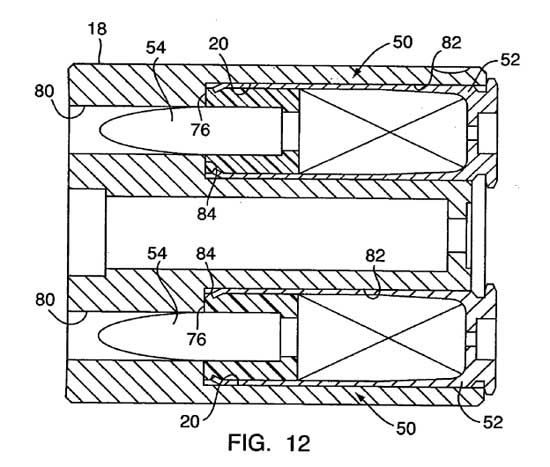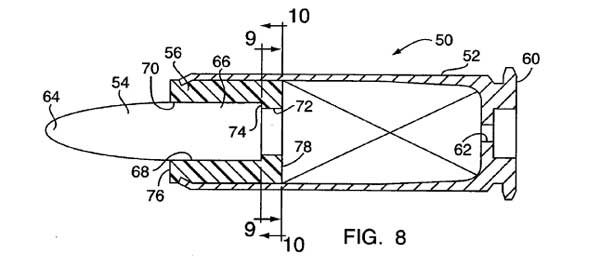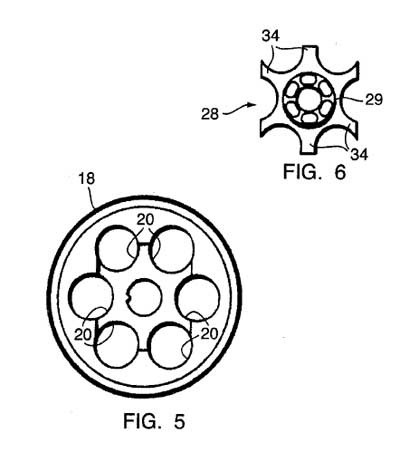In 2005, Smith & Wesson filed a patent application for a “high velocity ammunition system and firearm.” Â The abstract stated the bullets fired from this handgun would achieve muzzle velocities in excess of 25,000 fps!
Let’s put 25,000 fps into context…
- 25,000 fps is more than 17,000 miles per hour.
- This is more than 22 times the speed of sound.
- The .221 Fireball shot from a single shot pistol is the fastest SAAMI-spec handgun cartridge at about 2700 fps.
- Federal’s 220 Swift load only manages 4250 fps at the muzzle from a rifle.
When I started reading the patent application, I expected that the 25,000 fps was a typo. Â It just seemed so far outside the realm of possibility to achieve those speeds from any conventional firearm, much less a handgun.
Well, several pages into the application, I find a second reference to “high velocity.” Â This time the term is used to describe speeds in excess of 2,500 fps. Â This velocity definitely seems much more reasonable. Â I’d have to say the first figure listed was a typo.
However, the application is interesting for reasons other than typos.
It seems that S&W was attempting to patent a sabot-type ammunition and matching revolver. Â Smith & Wesson cited the inability to develop a revolver design that would reliably shoot and extract bottleneck cased ammunition. Â This limited the guns to using straight wall cased ammo.

In an effort to overcome this limitation, S&W came up with the idea of using a disintegrating sabot to achieve similar results to a bottleneck cartridge.
The patent application described a smaller than normal projectile that was partially encased in a sabot. Â The sabot was then seated in a straight wall case like used in a .357 Magnum or .44 Magnum cartridge. Â When fired, the sabot would move the projectile forward. Â The projectile would then engage the rifling and be propelled forward.
The sabot would be made of plastic that would then disintegrate and be expelled out of the bore.
Interestingly, the diagrams included with the patent application showed a square extractor. Â S&W obtained a patent for a square revolver extractor in 1993.
I could not find where a patent was actually issued. Â However, I am intrigued by the idea. Â I wonder what kind of velocity one could get with a .22 projectile from a .45 Colt case? Â Probably not 25,000 fps.


20 replies on “25,000 FPS Handgun Cartridge”
[…] A 25,000 FPS handgun round. […]
Pfft! That’s only about mach 20, dude. Call me when….BLAM!!!
Very interesting. The USPTO’s website indicates that no, this patent application has not issued, and it is questionable if it will. Smith has filed three “Requests for Continued Examination” so the application is essentially in its fourth round of examination.
– Patent Lawyer/Firearms Enthusiast-
Thanks for the research and information, TK. I’m not terribly familiar with the patent process, but figured delays were rarely a good sign for approval.
-Richard
The square extractor might be patentable, but sabots are old tech.
Maybe S&W added the extractor in order to try to patent the use of sabot rounds in revolvers?
I can see why the Patent Office keeps rejecting it.
Way back when a writer in one of the gun mags necked the .44mag case down to .17. IIRC it took him something like 5-6 dies to do the job. He built a rifle for it based on a Martini small-action receiver and called it his golf-bag gun for course-gophers.